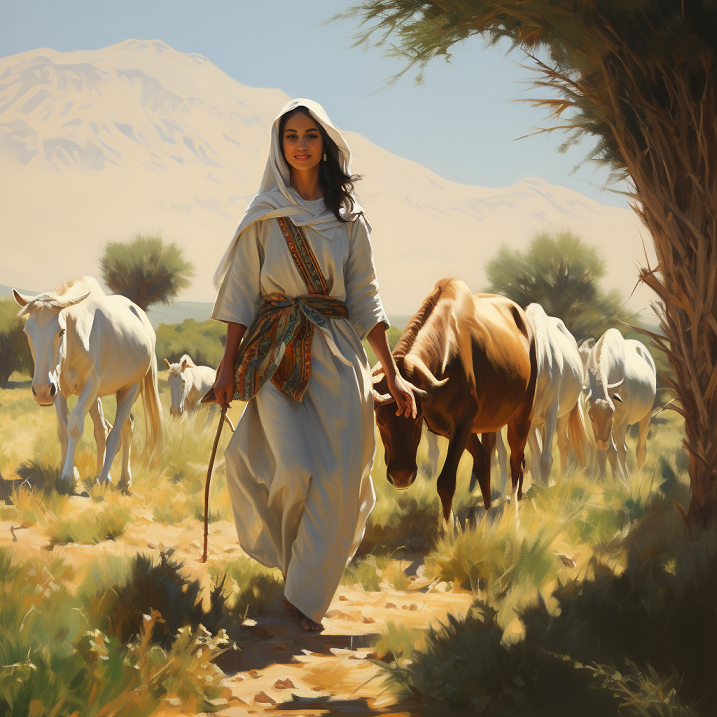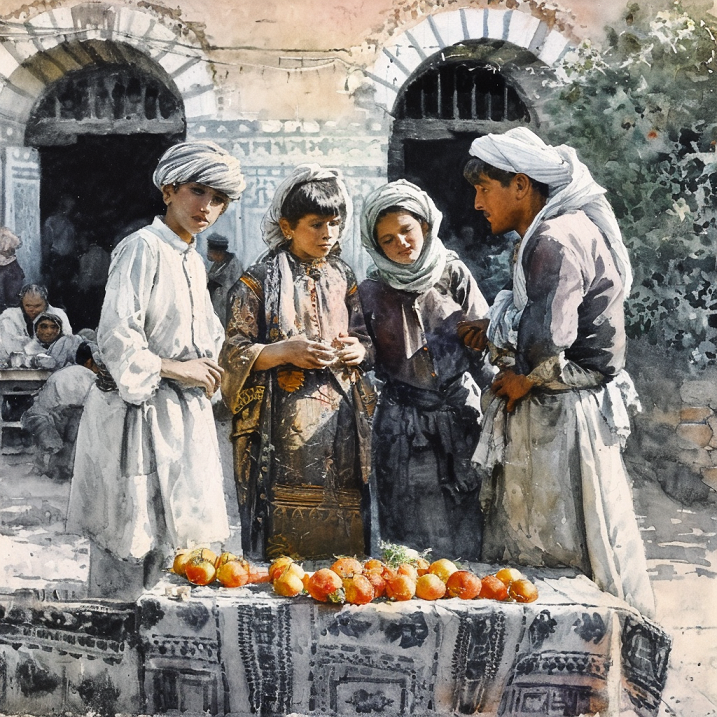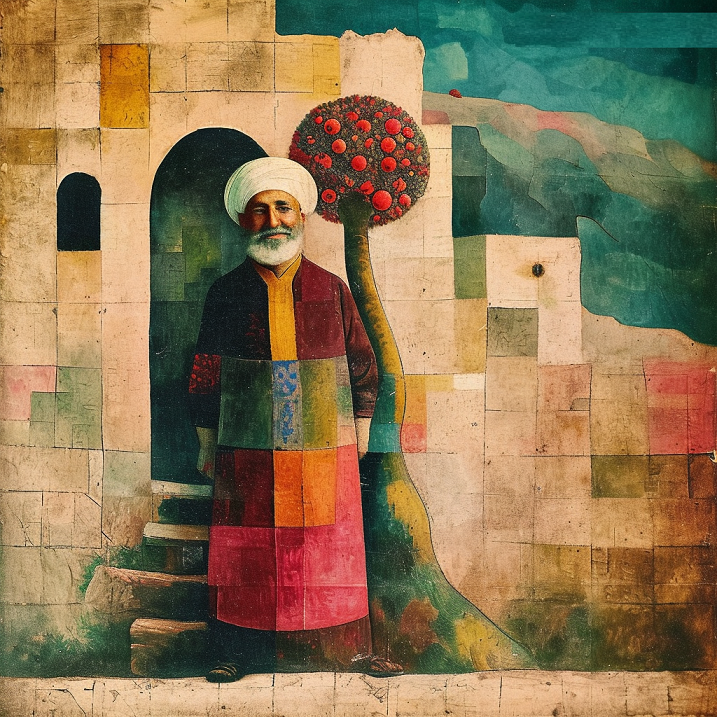As Gertrude Bell embarked on her journey through the Jebel Hauran, her path led her to two remarkable but long-abandoned villages: Shabha and Shabhiyyeh. These villages, nestled within the rugged terrain, bore silent testimony to the passage of time and the complex history of the region. Exploring their desolate streets and crumbling structures offered Bell a glimpse into a world that had long since faded into history.
Shabha and Shabhiyyeh, like many settlements in the Hauran, boasted a unique architectural heritage that reflected the cultural and historical influences of their time. From a distance, these villages appeared as sturdy and well-planned towns, with square towers rising proudly above the landscape. Their layout adhered to the grid pattern of streets, a characteristic feature of Roman city planning, providing a sense of order and organization.
Upon closer inspection, the reality of their condition became evident. The once-majestic walls of these villages lay in ruins, serving as a testament to the passage of centuries and the inevitability of decay. Bell observed the remnants of three-storied houses and courtyards that once buzzed with life but had now fallen into disrepair. The houses themselves featured architectural elements that spoke of their time, including stone slabs, arches, and intricate patterns in their construction.
After the Mohammadan invasion, which put an end to the prosperity of the Hauran uplands, few of the villages were re- inhabited, and when the Druzes came about a hundred and fifty years ago, they found no settled population. They made the Mountain their own, rebuilt and thereby destroyed the ancient towns, and extended their lordship over the plains to the south, though they have not established themselves in the villages of that debatable land which remains a happy hunting ground for the archaeologist.
Gertrude Bell: The desert and the Sown 1907
Role of the Jebeliyyeh in Shepherding
In the Jebel Hauran, the Jebeliyyeh, known as the Arabs of the Hills, played a vital role in the region’s pastoral and agricultural activities. Their way of life was deeply intertwined with the rhythms of the land, and they fulfilled essential roles as shepherds and farmers in the service of local Druze community.
During the winter months, the Jebeliyyeh were responsible for herding the Druze’ flocks that descended from the mountains into the plains, a critical aspect of the region’s agricultural cycle. Their expertise in managing these herds was crucial for the survival of the local communities.
In the summer, the Jebeliyyeh were permitted to occupy the uncultivated slopes of the Jebel Hauran with their own cattle. This seasonal migration allowed them to make the most of the available resources and contributed to the sustainable use of the land.

Transition from Desert to Cultivated Land
Bell’s journey took her through a landscape marked by stark transitions. The journey to the Jebel Hauran began in the desert, a harsh and unforgiving terrain where survival required a deep understanding of the land and its challenges. Yet, as they ventured deeper into the Jebel Hauran, the landscape gradually transformed to greener lands suitable to cultivation..
Arrival at Umm er Rumman
As Gertrude Bell’s journey led her further into the heart of the Jebel Druze plateau, she arrived at Umm er Rumman (mother of Pomegranates), a village perched on the rugged slopes. This remote settlement held its own unique charm and significance in the landscape of the Jebel Hauran.
Upon her arrival in Umm er Rumman, Bell had the privilege of meeting Muhammad el Atrash, member of an esteemed Druze family and Sheikh of the village. Muhammad was a figure of great importance in the Turshan family, and his leadership in Umm er Rumman was a testament to his standing within the community.
I came as near as the mud would allow, and shouted : “ Peace be upon you, oh Sheikh ! ” “ And upon you peace ! ’’ he bawled in answer, “ Where in your village is there a dry spot for a camp ^ ” The sheikh conferred at the top of his voice with his henchmen in the mud, and finally replied that he did not know, by God ! While I was wondering where to turn, a Druze stepped forward and announced that he could show me a place outside the town, and the sheikh, much relieved by the shifting of responsibility, gave me a loud injunction to go in peace, and resumed his occupations.
Gertrude Bell: The desert and the Sown 1907
Search for a Camping Spot Near the Village
After her initial interaction with Sheikh Muhammad, Gertrude Bell faced the practical challenge of finding a suitable camping spot near the village. The selection of a campsite was a decision not to be taken lightly, as it would become her temporary home amidst the rugged terrain of the Jebel Druze. To this end, a young man in the company of the Druze Sheikh volunteered to guide Bell’s party to a suitable spot.
My guide was a young man with the clear cut features and the sharp intelligent expression of his race. He was endowed, too, like all his kin, with a lively curiosity, and as he hopped from side to side of the road to avoid the pools of mud and slush, he had from me all my story, whence I came and whither I was going, who were my friends in the Jebel Druze and what my father’s name —very different this from the custom of the Arabs, with whom it is an essential point of good breeding never to demand more than the stranger sees fit to impart.
Gertrude Bell: The desert and the Sown 1907
The arrival at Umm er Rumman marked a pivotal point in Bell’s journey, as it allowed her to immerse herself in the daily life and intricate social dynamics of the Jebel Druze. Through her interactions with Sheikh Muhammad and his son Selman, she gained a deeper appreciation for the traditions, leadership, and familial connections that shaped the destiny of this remarkable region.
Breakfast with Druze Sheikh Muhammad
As Gertrude Bell’s journey unfolded in the Jebel Druze plateau, she encountered moments of cultural exchange and hospitality that left a lasting impression. One such encounter took place over breakfast with Sheikh Muhammad el Atrash, a pivotal figure in the community of Umm er Rumman.
The morning of their meeting saw a delay in their planned departure, as Sheikh Muhammad graciously extended an invitation to share breakfast. In the Jebel Druze, where hospitality was a cherished tradition, such invitations carried significance, offering a glimpse into the hospitality of the local people.
I was obliged to delay my start next morning in order to profit by the sheikh’s invitation to breakfast at a very elastic nine o’clock—two hours after sunrise was what was said, and who knows exactly when it may suit that luminary to appear ? It was a pleasant party. We discussed the war in Yemen in all its bearings—theoretically, for I was the only person who had any news, and mine was derived from a Weekly times a month old
Gertrude Bell: The desert and the Sown 1907
Druze Initiated and Uninitiated
As Gerturde Bell and her part bade farewell to the village of Umm Rumman, they were unexpectedly joined by Saleh, a local youth, who by chance was going to their next destination, Salkhad, and decided to accompany them. Described as a bright and literate youth, he made for an engaging conversational partner. As the conversation continued, the distinction between the initiated and uninitiated within the Druze community emerged as a topic of discussion. The initiated members held a unique position within the community, bound by secret knowledge and spiritual insights.
I was so tactless as to ask him whether he were ’akil, initiated—the Druzes are divided into the initiated and the uninitiated, but the line of demarcation does not follow that of social pre-eminence, since most of the Turshan are uninitiated. He gave me a sharp look, and replied : “ What do you think ? ” and I saw my error and dropped the subject.
Gertrude Bell: The desert and the Sown 1907
Journey to Salkhad
As Gertrude Bell’s journey continued through the Jebel Druze plateau, she embarked on the next leg of her adventure, travelling towards the town of Salkhad. Bell’s journey was enriched by the presence of Saleh, a man described as “clerkly” and well-acquainted with the local customs and landscapes. Saleh’s inclusion in the expedition added a valuable dimension to their travels, providing insights into the Jebel Druze that only a local resident could offer.
During their journey, Saleh’s inquisitive nature came to the forefront as he eagerly sought to understand Western customs and beliefs. This curiosity reflected the universal fascination with the unknown and the desire to bridge the gap between different cultures and worldviews.
Among the topics that Saleh and Gertrude Bell explored during their journey was the subject of marriage customs. Their discussion delved into the intricacies of marriage and the tradition of offering a marriage portion, shedding light on the cultural practices that defined relationships within the Druze community.
He was vastly entertained at the English rule that the father should pay a man for marrying his daughter(so he interpreted the habit of giving her a marriage portion), and we laughed together over the absurdity of the arrangement.
Gertrude Bell: The desert and the Sown 1907

Gertrude Bell’s transition into the villages of the Hauran Mountains marked a significant shift in both the landscape and cultural environments from the arid vastness of the Arab desert to a distinctively varied mountainous area. Within the heart of Jebel Druze, she immersed herself in a community distinguished by its unique traditions, beliefs, and a deep-seated history. This momentous episode in her travels across the Middle East is but one example of what is vividly brought to life in the books of Gertrude Bell, offering a lens through which we can experience the diverse identities of the region. Her encounters here not only enriched her understanding but also left a lasting impact on the narrative of her explorations, highlighting her profound connection with the lands and peoples she sought to understand.

